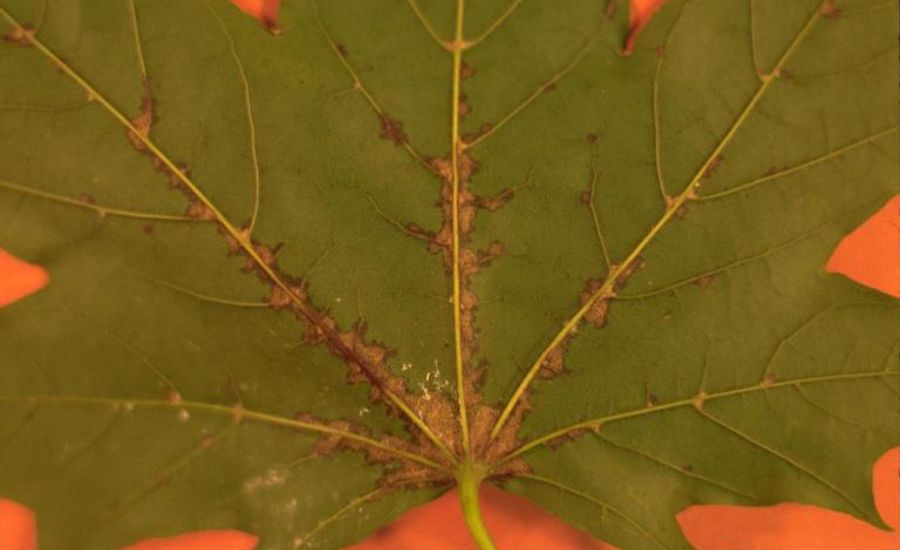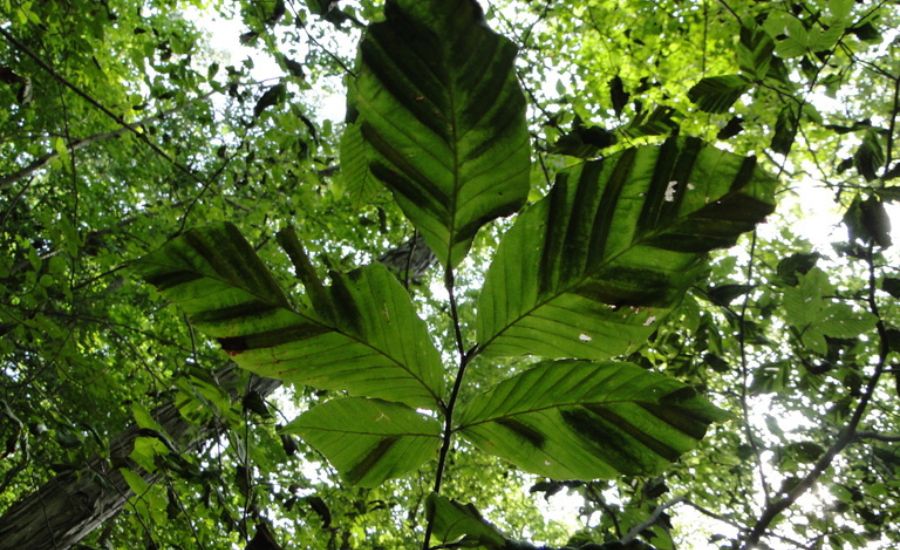5 Most Common Tree Diseases Affecting the Tri-County Area
Protect your property from common tree diseases around Chester County. Get expert advice on oak wilt, anthracnose, verticillium wilt, fire blight, and BLD.
William Gambone
Have you noticed your once-vibrant trees looking a little sickly? Are branches suddenly bare or leaves riddled with spots? If so, you’re not alone. There are a few tree diseases on the rise in the Tri-County area, and they’re threatening the health and beauty of your property. By understanding the most common tree diseases in our area right now, you can take steps to protect your trees and help preserve the natural beauty of our community.
Key Takeaways:
- Early detection of common tree diseases is important for protecting your landscape.
- Oak wilt, anthracnose, verticillium wilt, fire blight, and beech leaf disease are prevalent in the Tri-County area.
- For a professional diagnosis and treatment plan, consult a certified arborist.
Common Tree Diseases Tri-County Area Residents Should Be Aware Of
Just as humans rely on doctors for our health, trees also require expert care when they fall ill. In the Tri-County area, several tree diseases are particularly prevalent, posing a threat to the vitality of our trees. By understanding these diseases and taking proactive steps, you can help ensure the longevity of your landscape.

Oak wilt, photo courtesy of Joseph OBrien, USDA Forest Service, Bugwood.org
1. Oak Wilt
Oak wilt is a fungal disease caused by Bretziella fagacearum that affects oak trees. This disease is fatal to trees because it blocks the flow of water and nutrients to the crown, causing the leaves to wilt and die, hence the name, oak wilt.
The fungus can travel in three ways:
- Beetles: Sap beetles feeding on the spore mats in infected trees carry those spores to healthy trees, spreading the disease.
- Underground: Oak tree roots can actually grow together, forming a network. If one tree is infected, the fungus can travel through these connected roots and infect nearby healthy trees.
- Humans: Moving firewood from infected trees into new areas or using the same equipment without sanitizing it in between trees can also unintentionally spread this disease.
Symptoms & Characteristics
To identify oak wilt, carefully inspect your oak trees for any of the following symptoms:
- Sections of the crown suddenly wilting and browning
- Leaves dropping prematurely, especially in the upper crown
- Leaves dying from the margins inward
- Dark streaks under the bark
- Large cracks in the bark caused by fungal spore mats
Prevention & Treatment
While white oak trees are generally more resistant to oak wilt and may survive for years after infection, complete recovery is rare. Even though fungicide injections and root barriers can help manage the spread of this disease, the most effective way to prevent the devastating effects of oak wilt is with early detection and prompt removal of infected trees.

Anthracnose photo by Cheryl Kaiser, University of Kentucky, Bugwood.org
2. Anthracnose
Anthracnose is a fungal disease that affects many deciduous hardwood trees, including maples, oaks, sycamores, and ash trees. It is caused by different fungal species depending on the host tree, but all share similar symptoms and treatments.
Anthracnose spores are dormant in winter, primarily in cankers, infected branches and twigs, and sometimes in fallen leaves. Wind and rain carry these fungal spores to developing leaf and twig tissue, where they germinate, penetrate, and cause additional spots. Because anthracnose thrives in cool, wet conditions, it is more prevalent during spring and early summer.
Symptoms & Characteristics
Infected trees exhibit various symptoms, including:
- Small dead spots on leaves, often with a reddish-brown or purplish border
- Dead and curled leaf margins and tips
- Brown dead areas along the leaf veins
- Premature leaf drop
Prevention & Treatment
To effectively prevent and manage anthracnose, we recommend:
- Pruning and properly disposing of dead branches and twigs
- Gathering and destroying fallen leaves to prevent fungus from overwintering
- Applying fungicide at bud break and repeating treatments every week or two until daily temperatures exceed 60 degrees Fahrenheit
- Scheduling inspections when you have concerns about your trees’ health

Verticillium wilt, photo by H.J. Larsen, Bugwood.org
3. Verticillium Wilt
Verticillium wilt is a soil-borne fungal disease that affects a wide range of woody ornamental trees and shrubs. It is caused by the fungus Verticillium dahlia. This fungus survives in the soil as dormant spores and enters trees through wounds in the roots.
Once inside the tree, the fungus clogs the water-conducting vessels, restricting the flow of water and nutrients to branches and leaves. This ultimately leads to wilting, leaf discoloration, and branch dieback.
Symptoms & Characteristics
Early indications of verticillium wilt include:
- Heavy seed production
- Smaller leaves
- Leaf margins turning brown
- Foliage wilting on one side of the tree
- Streaks of discoloration under the bark of wilting branches
Prevention & Treatment
Verticillium wilt is a challenging disease to manage, but there are several strategies that can help minimize its impact:
- Avoiding replanting because the fungus can persist in the soil for many years
- Pruning affected branches to prevent the spread of the disease
- Maintaining the health of your trees through proper watering, fertilization, and pruning
- Avoiding use of wood chips or other plant material from infected trees as mulch
- Applying fungicide injections for treatment

4. Fire Blight
Fire blight is a bacterial disease that primarily affects apple and pear trees but can also infect other members of the Rosaceae family, including quince, crabapple, and hawthorn. It is caused by the bacterium Erwinia amylovora and is known for how quickly it can spread and destroy trees.
Fire blight bacteria overwinter in cankers on branches and truck. When temperatures reach around 65 degrees Fahrenheit, they multiply and ooze out of the cankers. Wind, rain, and pollinators spread the bacteria to blossoms, where they replicate and infect the plant. Infections can also occur through wounds caused by hail or insects.
Symptoms & Characteristics
Some telltale signs of fire blight include:
- Leaves suddenly wilting and turning brown, often resembling a scorched or blighted appearance
- Dark, oozing cankers on branches and twigs
- Infected branches that die back rapidly
- Blossoms and young fruit on flowering trees turning brown and shriveling
Prevention & Treatment
Because of how fast this disease can spread, once symptoms are present, it requires diligent year-round management. Here’s a few effective strategies to combat fire blight:
- Prune out all cankers during dormancy.
- Remove and destroy any branches or twigs that show sign of infection.
- Apply a copper spray when the buds of a tree or shrub are just beginning to open and show a small, green tip to prevent new infections.
- Apply streptomycin sprays after bloom and petal fall, especially after hail or windstorms.
- Manage populations of aphids and leafhoppers to prevent additional stress on trees and potential fire blight infections.

Beech leaf disease photo by Yonghao Li, The Connecticut Agricultural Experiment Station, Bugwood.org
5. Beech Leaf Disease
Beech leaf disease (BLD) is a relatively new and emerging threat to American beech trees. First discovered in 2012, it has since spread rapidly throughout the eastern United States, causing significant damage to beech populations.
This disease is caused by a combination of a tiny, worm-like insect called a nematode and the fungus, Neonectria fagigena. As the nematode feeds on the leaves of beech trees, it creates wounds that provide entry points for the fungus. The fungus then colonizes the damaged tissue, causing the characteristic symptoms of BLD.
Symptoms & Characteristics
Beech leaf is easy to spot. Here is what you should watch for:
- Distinctive, dark bands causing striped leaves, visible in early spring.
- Withered, curled, and leathery leaves
- Visible branch dieback
Prevention & Treatment
Currently, there is no known cure for beech leaf disease. However, research is ongoing to better understand this disease, how it spreads, which, if any, treatments can suppress the nematode population, and if there are any beech trees that are more resistant to BLD.
If you think you might have a tree infected with beech leaf disease, call your county’s service forester.
Protect Your Property from Common Tree Diseases with Help from B.G. Tree Care
At B.G. Tree Care, we are committed to preserving the health and beauty of trees in the Tri-County area. Our team is dedicated to providing expert tree care services, including disease diagnosis, treatment, and prevention.
If you’re concerned that your trees are suffering from one of these diseases, don’t hesitate to give us a call at 484-941-4232. Our Board Certified Master Arborist offers comprehensive consultations to assess your trees’ health and recommend appropriate treatment plans.
Together, we can work to protect the future of our forests and landscapes.

William Gambone
With almost 40 years of success in the tree care industry, it is evident that Bill’s passion extends beyond just the trees. He takes great pride in building relationships within the community, making B.G.





